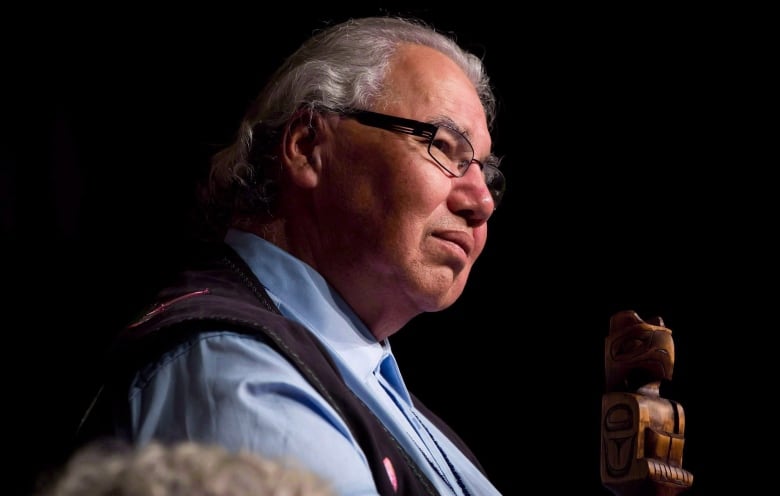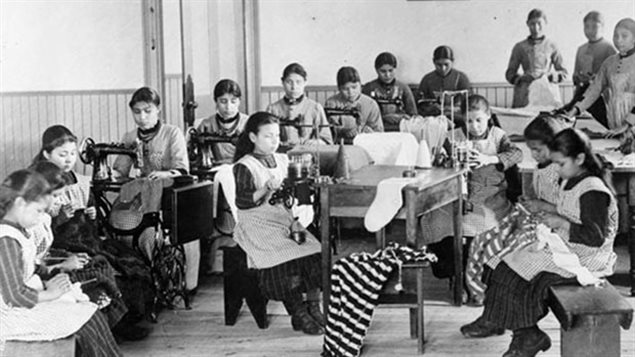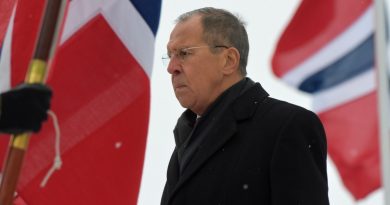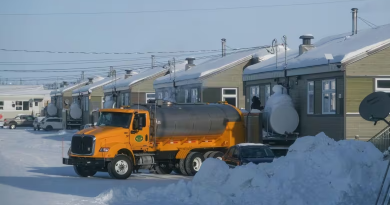Northerners honour Murray Sinclair for championing Truth and Reconciliation

Canada’s Governor General Mary Simon led a chorus of northern voices on Monday remembering the legacy of former senator and Truth and Reconciliation Commission head Murray Sinclair.
“He leaves behind an invaluable legacy of bringing to light the stories of thousands of Residential Schools Survivors,” Simon said in a statement.
“This marking moment in Canada’s history led to the Truth and Reconciliation Commission’s 94 calls to action, which have initiated positive change for Indigenous communities in all spheres of society.”
A statement from Murray’s family said he died in hospital Monday morning in Winnipeg at age 73.
Sinclair, Anishinaabe and a member of the Peguis First Nation, was Manitoba’s first Indigenous judge.
“We are deeply saddened by the loss of a friend and prominent leader in Canada who championed human rights, justice and truth.”
Read #GGSimon’s message on the passing of the Honourable Murray Sinclair: https://t.co/GcoC4NVeAN pic.twitter.com/qhqBFAqvk3
— Governor General of Canada (@GGCanada) November 4, 2024
Murray, Anishinaabe and a member of the Peguis First Nation, served as a senator and led Canada’s Truth and Reconciliation Commission.
He was invested as a companion of the Order of Canada and received a Meritorious Service Decoration in 2022.
Inuit Tapiriit Kanatami, the national Inuit organization in Canada, said his work on the commission will continue to reverberate across the country.
“Inuit are grateful for his unwavering leadership, wisdom & advocacy. Canadians will be positively impacted by his incredible legacy for generations to come,” the organization said in a post on Twitter.
ITK mourns the passing of Murray Sinclair. Inuit are grateful for his unwavering leadership, wisdom & advocacy. Canadians will be positively impacted by his incredible legacy for generations to come.
Image: Kent Monkman for Queens University pic.twitter.com/jfabBbKuuu— ITK (@ITK_CanadaInuit) November 4, 2024
The Truth and Reconciliation Commission in Canada
The legacy of residential schools in Canada traces back to the 1800s when Inuit and First Nations children were sent to federally funded, largely church-run institutions with the aim of assimilating them into western culture. With over 130 such schools scattered across the country, more than 150,000 Inuit, Métis, and First Nations children are believed to have been part of the residential school system, which persisted until the closure of the last institution in 1998.
As part of the Indian Residential Schools Settlement Agreement, established to assist former students, the Truth and Reconciliation Commission was established to examine the legacy of the institutions.

Throughout the commission, survivors shared stories of abuse and the enduring negative impacts of being separated from their language, culture, and families. The final report of the commission included 94 calls to action.
The commission ran from 2008 to 2015.
Upon release of the recommendations, Murray called the residential school experience “one of the darkest, most troubling chapters in our collective history.”
The National Centre for Truth and Reconciliation (NCTR), a Winnipeg-based research centre, said Murray’s focus on survivors marked a turning point in the country’s history.
We are devastated to learn of the loss of our beloved leader and Elder, Mizana Giizhik, His Honour, Murray Sinclair. His tireless work to advance the rights of Indigenous Peoples and ensure the legacy of residential school Survivors will never be forgotten. pic.twitter.com/OhqHzBAZ80
— NCTR (@NCTR_UM) November 4, 2024
“Murray Sinclair’s unwavering commitment to truth and reconciliation in Canada is unparalleled,” NCTR said in statement on their website.
“As a lawyer, judge and Senator, he fought tirelessly for the rights of First Nations, Inuit, and Métis Peoples.
Comments, tips or story ideas? Contact Eilís at eilis.quinn(at)cbc.ca
Related stories from around the North:
Canada: ‘Listen to us,’ says residential school survivor as N.L. premier begins apologies, CBC News
Finland: Truth and Reconciliation Commission should continue says Sami Parliament in Finland, Eye on the Arctic
Greenland: Greenland, Denmark initiate investigation into past relations, Eye on the Arctic
Norway: Can cross-border cooperation help decolonize Sami-language education, Eye on the Arctic
Sweden: Sami in Sweden start work on structure of Truth and Reconciliation Commission, Eye on the Arctic
United States: U.S. Interior Secretary listens to Indian boarding school survivors on Alaska stop, Eye on the Arctic


